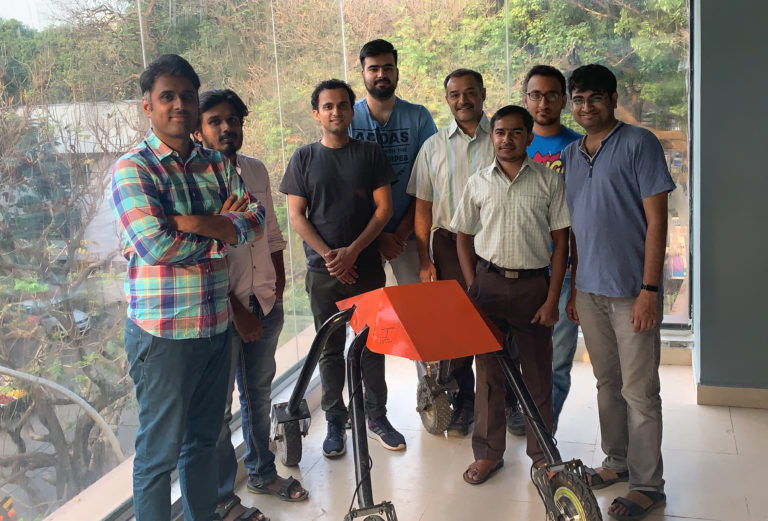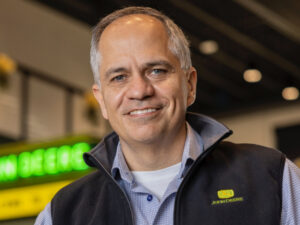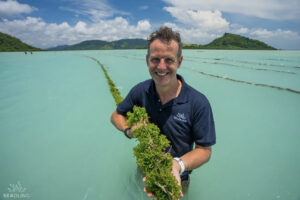“As a trader on Wall Street, I had all the data in the world to make informed decisions, whereas in agriculture, farm managers can’t tell you why they are using one fertilizer versus another. There is a place for wisdom in agriculture but it needs to be augmented with data.”
Jaisimha Rao was a portfolio manager at BlackRock in New York for over six years before returning to India in 2014 to work on his family’s coffee farm. He’d never lived in India full time, spending most of his childhood in Kuwait, and was inspired by Lawrence Fink, BlackRock’s CEO, who had built that investment management business from scratch.
“There’s this idea of agriculture not making money in India; there is money to be made but precision agriculture is required,” he tells AgFunderNews.
In an effort to bring more data to Indian farmers and inform their decision making, Rao started by deploying drones. “I thought drones were an excellent way to gather data at scale, and it was initially transformational to look at farms from the sky, so we had a pretty good first eight months.”
But then he ran into a wall: the imagery did not go far enough. Rao’s customers wanted more than just information about their fields, they wanted him to help them solve the issues identified by the drones. This is a familiar story for the agritech industry all over the world and the term “actionable insights” is now commonplace in the pitch decks of a range of digital ag startups, not least those offering drones services.
With these insights in mind, Rao pivoted and founded TartanSense, to build small land-based robots for small farms (and smallholder farmers), initially focused on pesticide application. The robot is a semi-autonomous rover, which travels across the fields with a downward facing camera. The AI/ML system identifies pests using computer vision and then targets precision sprayers on them. The rover and its accompanying software will also gather land-based data, at a much higher resolution than from drones, generating reports with actionable insights for the farmer.
Similar technology exists in the US and Europe, although targeting larger farms, such as Blue River Technology (now owned by John Deere) and ecoRobotix. But Rao did not see any affordable options for smallholder farmers; the average landholding in India is just a couple of hectares.
“I want to democratize this technology that farmers in developed markets are starting to experience and make it affordable for smallholder farmers across emerging markets,” says Rao. “But there’s also a home advantage doing this in India; India has the second largest agricultural land area in the world after the US and farming is the backbone of society here.”
India is the largest cotton grower in the world, with 12 million hectares of cotton farms, which makes it a good crop for TartanSense to start with. The startup is also looking at soybeans, shortlisting these crops due to their high value and the high cost of their inputs, which he hopes to reduce with the precision spraying technology.
“Fertilizer application is a future option for our robots; if our robot can apply chemicals on a plant-by-plant level, we can reduce input costs significantly,” says Rao.
But how does Rao plan to get this technology into the hands of the farmers where even a $15,000 tractor would be too expensive? (For context, American farmers spend north of $500,000 on new tractors.)
There are a few models the startup can pursue and Rao admits that this is not yet ironed out, as he wants to focus on proving the technology works and providing an ROI for farmers. But currently it’s deploying an Uber-like model where a farmer will request a weeding service, and TartanSense shares the revenue with a local agent who performs the task using its robot.
“As an industry, we have over-promised and under-delivered on what technology can do and we don’t want to make the same mistake; we want to focus on ROI first and how we can make an immediate impact for the farmer. At the end of the day, he doesn’t care if it’s using AI, it just needs to work.”
Another model that other Indian startups are pursuing is engaging a village-level entrepreneur, who already has a relationship with the farmer, to purchase the robot and either lease it out or perform the service for the farmer. Or they could be on the TartanSense payroll.
TartanSense is currently piloting with a few customers, including large farming companies and progressive farmers. “Once we have a differentiated product that works well, we will have various interesting options for how to roll it out.”
TartanSense recently closed a $2 million seed round of funding with leading agrifood tech investor Omnivore as well as Blume Ventures, and BEENEXT. Individual investors include the cofounders of India’s leading robotics company GreyOrange, and the co-founder of Silicon Valley-based Vicarious AI, which is backed by Elon Musk and Jeff Bezos.
Rao is using the funding to build out his team and says he has great technical talent to choose from in Bangalore, where TartanSense is based alongside many of the world’s largest tech companies.
*This post is sponsored by Omnivore, an AgFunder Network Partner. Find out more here.*
















Sponsored
International Fresh Produce Association launches year 3 of its produce accelerator